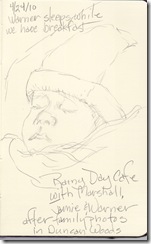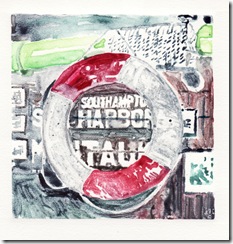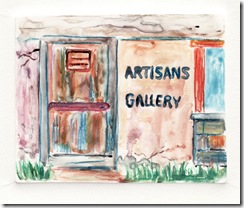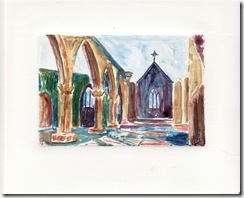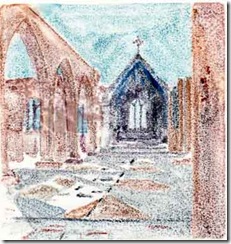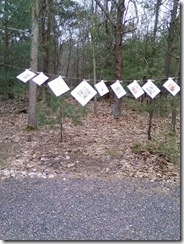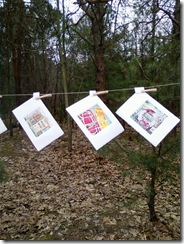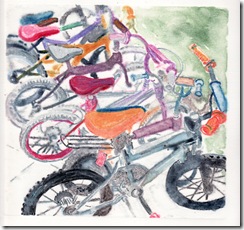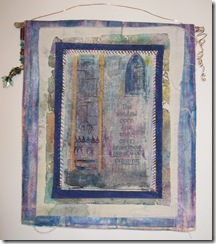Watercolor mono-prints are a fun thing to do and anyone can do it, no drawing skills required. Of course, if you are able to draw you can do that but it isn’t essential. I like doing small ones, especially now that I have my grandson here, I can put him in his snuggie on the kitchen table and chat while I work. But you want to know how to do it, not what I do while I’m doing it.
Here are two examples of prints I’ve done. Two of these are from photographs which is the method I’m going to show you. The other is from a sketch in one of my sketchbooks and I show you that just to show you that you have other options.
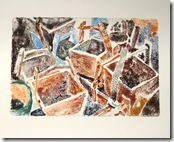
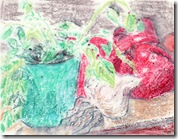
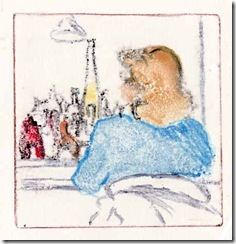
First you’ll need a few basic supplies and they are easily obtainable. A piece of plexi-glass is the plate the size of your photograph and you’ll need sandpaper to prepare the plate. One side gets sanded so it will hold the paint. Your local glass cutter or picture framer will cut you a piece of plexi whatever size you need.
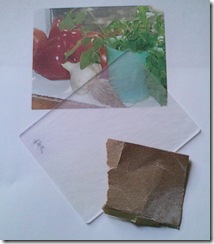
The other supplies you’ll need are print paper, watercolor paints, a paint brush or watercolor crayons and a container to soak your paper in. Also helpful but not essential is gum arabic and a chamois
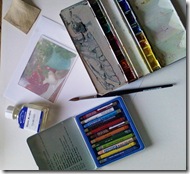

Cut your paper a bit larger than your photograph, you want some white space around the image and you want room to crop just in case you don’t put the paper on the plate straight. Put the paper in the pan of water to soak while you’re working on your plate. Also, if there is something in the photograph that shouldn’t be reversed, like a word, reverse the photograph before you make your plate. When you print it’s going to be backwards.
If you have the gum arabic and chamois, put a drop on the plate and rub it around to completely cover the plate. It acts as a release and supposedly the paint comes off the plate easier. I’ve done it with and without and haven’t had a problem either way. Let the gum arabic dry before you start applying the watercolor to your plate.
Once it’s dry put the plate over your photograph. Now you can see why you don’t need to know how to draw, you’re going to paint the image you see the colors you see. Don’t be skimpy with the paint, you want more paint than water in your watercolor and if you’re using the crayons, softer is better. Caran d'Ache and Stabilotone are the two I like best. I’ve also used Staedtler Watercolor Crayons but I find them harder to work with. It isn’t necessary to finish it all in one sitting, when you print the paper is going to be damp and the paint will dampen and move off the plate to the paper. Here you can see the finished plate and the photograph.

Now that the plate is ready, get your paper out of the pan, blot it with paper towel. You want it damp, not wet. You’ll also need one more piece of equipment, a wooden spoon.
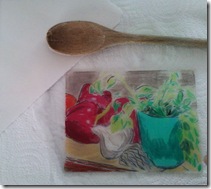
Put your plate down on something that will keep it in place. Rubber shelf padding works; you don’t want the plate to move while you’re printing. Now carefully lay the paper down on the plate and rub it softly with your hand to marry the paper and the plate. Once it’s down, rub it with the back of the spoon. You can hold one side down and carefully lift a corner to peek and see if you’ve rubbed enough. When you see that you’ve rubbed enough pull the paper off and set it aside to dry. When it’s dry, frame it.
